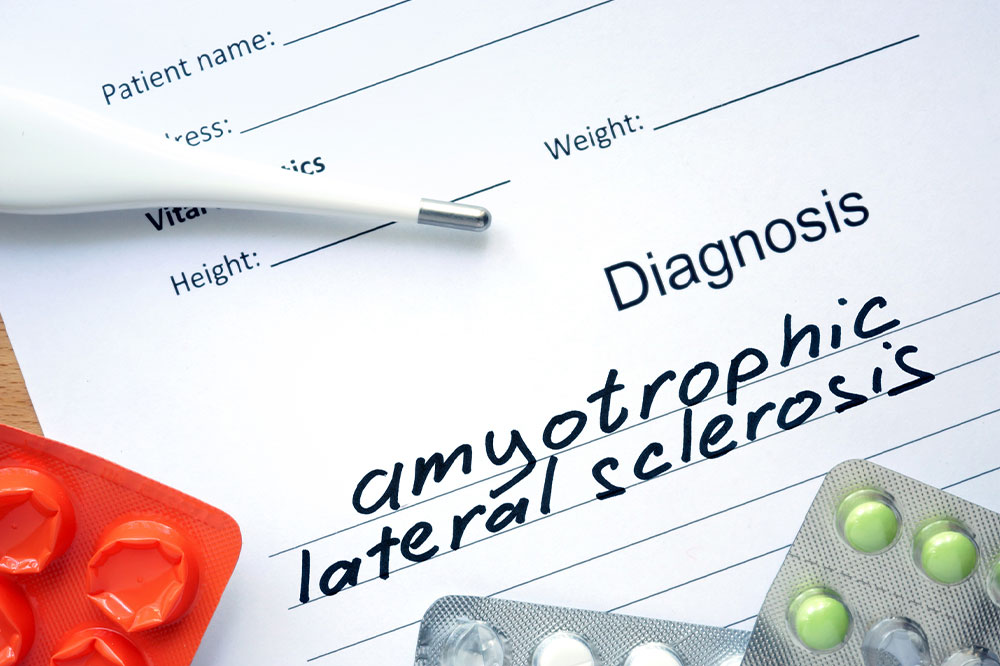
ALS – Causes, symptoms, and management
Amyotrophic lateral sclerosis is a nervous system disease, i.e., it affects the spinal cord and brain’s nerve cells. The condition typically begins with weakness or twitching in one leg or arm, slurred speech, or trouble swallowing. Over time, it results in a loss of muscle control. Often called Lou Gehrig’s disease, the precise cause is not known, however, a tiny percentage of cases indicate genetics as a risk factor.
Causes and risk factors
ALS may be classified as familial or sporadic, but most cases are sporadic, which means the cause is unknown. On the other hand, familial amyotrophic lateral sclerosis is when the condition is inherited from a parent, and only 5 to 10% of all cases fall under this category. Other causes for ALS are not understood, but some factors can increase the risk. These include nerve inflammation, protein abnormalities, chemical messenger glutamate imbalances, and free radical damage. Typically, military veterans are at a high risk of developing the condition, though the reasons are unclear. Other risk factors are:
Age: Older adults are more likely to develop amyotrophic lateral sclerosis, with symptoms developing between 55 and 75. In some, the symptoms may appear earlier.
Sex: ALS is more prevalent in males than females.
Ethnicity and race: Caucasian people are more prone to ALS.
Symptoms
When affected by ALS, one may experience muscle stiffness or weakness. The early signs also include the following:
- Weakness in the hands or legs, where one may frequently tip over or have trouble walking
- Bulbar onset, where one may have difficulty swallowing or experience speech-related issues
Regardless of where the symptoms develop, they spread to other body parts. As the disease progresses, one may experience symptoms such as:
- Fatigue and weakness
- Slurred speech
- Twitching, particularly in feet and hands
- Inability to project the voice
- Difficulty using legs and arms
- Muscle cramps
- Difficulty breathing, swallowing, and chewing
- Shortness of breath
- Anxiety and depression
- Inability to walk or stand independently
Diagnosis
A single test cannot offer a clear diagnosis for ALS, so doctors usually evaluate the symptoms and recommend multiple tests to rule out other conditions that have similar symptoms. Some tests that help with the diagnosis are:
- Nerve conduction study to assess how well the nerve transports signals
- Electromyography detects electrical energy in muscles
These tests help eliminates possibilities of myopathy and peripheral neuropathy. MRI scans can help doctors detect other problems, such as herniated disk in the neck or a spinal cord tumor, that could cause ALS-like symptoms. Urine and blood tests and a muscle biopsy may also be performed to rule out other underlying conditions. If one experiences symptoms related to motion control, they should consult a doctor and get tested.
Treatment options
There is no permanent cure for ALS. Over time, the condition affects the muscles necessary to breathe, eat, speak, and move. So, the treatment options can help reduce symptoms, slow disease progression, and prevent further complications. ALS might result in varying social, mental, and physical changes. Consequently, a team of experts focuses on improving quality of life, managing symptoms, and prolonging vitality when dealing with the condition. Doctors may recommend FDA-approved prescription options to slow down disease progression. Prescription treatment can help lower the body’s glutamate levels, an excitotoxin that causes neuronal damage. The treatment may also reduce the rate of decline of physical function by 33%.
Therapy
Physical therapy: This helps those with ALS increase their mobility and manage pain. The therapist may recommend the following options:
- Devices and aids that make life easier, like ramps
- Mobility aids like wheelchairs and walkers
- Low-impact exercises to increase overall well-being and cardiovascular fitness
Occupational therapy: This can help one maintain their independence for longer. The occupational therapist can suggest the following options:
- Training to compensate for arm and hand weakness
- Assistive technologies and adaptive equipment to help one keep up with their daily routine
Speech therapy: This can help people with ALS who are dealing with speech-related issues. A speech therapist may help one learn adaptive techniques and other communication methods using a computer and writing-based equipment.
Additionally, one will require nutritional support, as trouble swallowing can make it challenging to get the necessary nutrients. A qualified, registered nutritionist can help one follow a regimen that meets daily nutrient requirements and consists of easy-to-swallow foods. Feeding tubes and suction devices may also help. With the weakening respiratory muscles weakened, one may require breathing assistance, involving the use of a device to breathe better at night. Some might require mechanical ventilation, which uses a respirator connected to a tube. The tube’s other end goes into the windpipe via tracheostomy, a surgically created hole in the neck. One can manage amyotrophic lateral sclerosis with the right therapy and prescription treatment.




